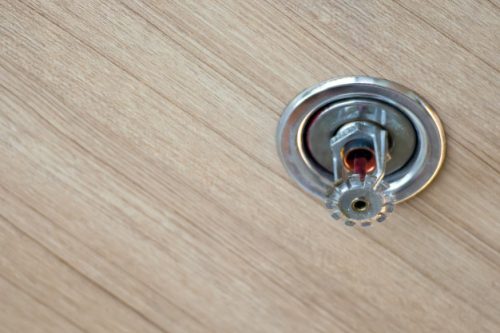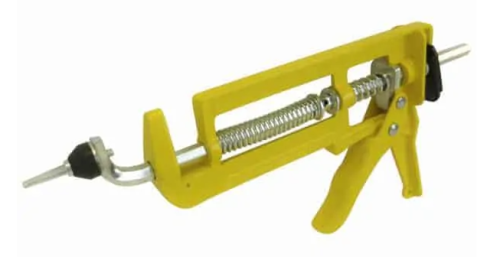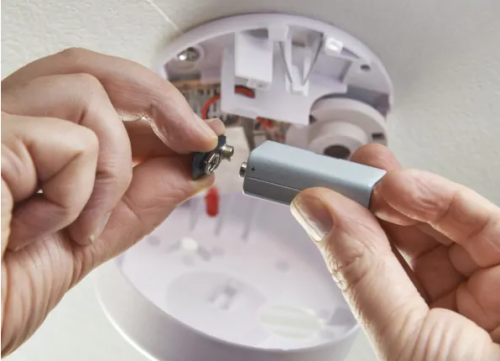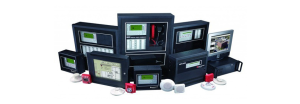Misconceptions about sprinkler fire extinguishing system
Today, there are rarely any misconceptions about sprinkler fire extinguishing systems that are spread through the media, in fact, the media is sometimes spreading harmful falsehoods about how sprinkler systems work. Unfortunately, these misconceptions can lead many people to think that these safety tools are unreliable, click here to learn more and see an example. Here in this article we are going to address the biggest misconceptions about sprinklers.

Despite what some people think, sprinklers do not operate simultaneously. In fact, the little red bulb activates a sprinkler when it reacts to heat. Below we mention the most important misconceptions about sprinklers.
Sprinkler Myth #1: In a fire, every sprinkler head breaks and destroys everything in the building.
While Hollywood likes to show that a small sprinkler system is activated by the smallest fire and creates a dramatic flood, you should know that the vast majority of fire sprinklers do not work simultaneously, and such a notion It originates from misconceptions about sprinklers.
In fact, each sprinkler must be activated separately by the heat from the fire. Also, let’s clear up another myth: Contrary to popular belief, smoke, cooking fumes, or a little steam will not activate sprinklers. There’s no reason to worry about flooding if you install fire sprinklers and burn your toast.
The simple but thoughtful design of fire sprinklers ensures that only the sprinklers closest to the fire are sprayed and the rest of the area remains dry before the heat of the fire reaches the sprinklers in that location. NFPA reports that residential fires are almost always controlled with a sprinkler head. Six or fewer sprinkler heads will control 90% of all fires, and two or fewer will prevent 82% of fires from spreading.
Here’s how sprinklers work:
Almost every sprinkler is closed by a fusible metal link or a small glass bulb filled with a heat-sensitive liquid. When a location ignites and the air heats up to a certain temperature—between 135°F and 650°F (57°C and 343°C), depending on the temperature of the sprinkler—the fused link melts, or the liquid inside the bulb expands. As the glass breaks, the sprinkler head opens, allowing water to be directed toward the fire.
There is only one exception to this rule: a submerged sprinkler system is designed to respond quickly to fires with large amounts of water, like in Hollywood movies. Submersible sprinklers do not have heat-sensitive operating elements, so they are permanently open, and as soon as a signal is sent to a monitoring screen, the triggering device, like a smoke detector, is ready to deliver water. But these systems are only installed in highly flammable or hazardous areas like airplane hangars or power generating stations—not your average home or commercial building.
Misconception about Sprinkler Fire Extinguishing System #2: The damage caused by sprinkler water is much worse than the damage caused by fire.
According to the NFPA, sprinklers activate as soon as they sense the heat from a fire and are capable of controlling 96 percent of containment fires. This not only reduces heat and smoke in a small area of the property, but also buys valuable time for people to safely exit the building.
Here’s another fact to consider: Quick-response sprinklers release 8 to 24 gallons of water per minute—and one is often enough to control a fire. In contrast, dual fire hoses deliver between 150 and 250 gallons of water per minute. The math behind this is pretty simple: fire hoses will pour significantly more water onto your property to put out a fire and cause significantly more damage than sprinklers.
And that’s not taking into account the flame and smoke damage as the fire continues to spread over the course of several minutes until the fire brigade arrives. In the case of large fires or high-risk buildings, the commanding officer may even take a defensive position, allowing the fire to extinguish itself and protect neighboring structures, rather than risking the safety of firefighters.
Modern homes burn hotter and faster than ever due to the widespread use of lighter weight, synthetic, and inexpensive materials in construction and furnishings. Fire testing by UL (formerly Underwriter’s Laboratories) showed that a modern room can be fully engulfed in flames in less than 4 minutes. In contrast, a room filled with natural materials such as solid wood, which was commonly used decades ago, took about 30 minutes to reach an electrical discharge and generate lightning.
Sprinkler Fire Extinguisher Myth #3: There is a huge risk that sprinklers will accidentally leak or activate.
The chance of a manufacturing defect leading to a sprinkler discharge is extremely low: 1 in 16 million to be exact. Although other factors, from freezing to corrosion, can also cause leakage or accidental discharge of sprinklers, but their occurrence is no more than leakage from the building’s plumbing system.
There are simple steps commercial property owners can take to further reduce the risk of sprinkler leaks or accidental discharges. For example, installing dry sprinkler systems in frost-prone areas avoids the risk of pipes bursting or leaking when temperatures drop. Adding a listed antifreeze solution, using electrical heat tracing, or increasing insulation can also help prevent damage to wet system pipes.
Replacing pressurized air with nitrogen is a game changer for combating corrosion in dry type sprinklers because these sprinkler models are at the highest risk of damage.
The protective head is used in a sprinkler against impacts that cause the head to be lost and cause flooding in high-risk environments such as gyms, warehouses or construction sites, and if the sprinkler is accidentally triggered, the Shutgun tool can By quickly stopping the flow of water and restoring the sprinkler’s ability to minimize losses caused by fire.

Misconceptions about sprinkler fire extinguishing system
And home sprinklers are just as reliable as they require much less maintenance.
Misconceptions About Sprinkler Fire Extinguishing System #4: Smoke detectors provide adequate protection against fire.
It cannot be denied that smoke detectors can save many lives by providing early warning of a smoke or fire event. But while detectors alert people to danger, they do nothing to slow or extinguish growing flames or protect those who cannot escape on their own, such as small children or the elderly.
Battery-powered smoke detectors are also less reliable than sprinklers – as they often fail due to the batteries dying or being removed from the system by property owners frustrated by the detector’s “obnoxious” alarms. . It also happens to homeowners who get distracted by other things and forget to replace the batteries they took out in the middle of the night because of the detector beeping.
Working smoke detectors cut the chance of dying in a fire in half, although recently fire officials are concerned that their ability to reduce death and injury has diminished, and as we’ve already mentioned, your risk of dying is as high as 85 percent in buildings that are There is no sprinkler in them, it increases.
Sprinklers have been the mainstay of commercial buildings since the 1960s and commercial-residential buildings such as hotels and condominiums since the 1990s. Despite the fact that the number of deaths from house fires is reduced by 90% if there are detectors and sprinklers. But these are rarely found in single-family homes or duplexes.

Sprinkler Myth #5: Residential sprinklers are very expensive
Now, every homeowner needs a home sprinkler, which is highly recommended. But housing industry groups strongly disagree: They say installing fire sprinkler systems will drive up home prices, driving thousands of potential buyers out of the market.
But it is better to know that the fire extinguishing sprinkler system is the most efficient, cheapest and fastest fire extinguishing system, and according to NFPA, the cost of equipping a building with a fire extinguishing sprinkler system will be about the cost of carpeting the building.
It should also be noted that even the cost of sprinkler repairs and maintenance is not high, and sprinklers installed in residential buildings do not require special maintenance operations except for system pressure control. Sprinkler systems may not be activated for 50 years, but they are always ready to work to ensure the safety of your building against fire.
دیدگاه خود را با ما در میان بگذارید















1 thought on “Misconceptions about sprinkler fire extinguishing system”
thanks for info